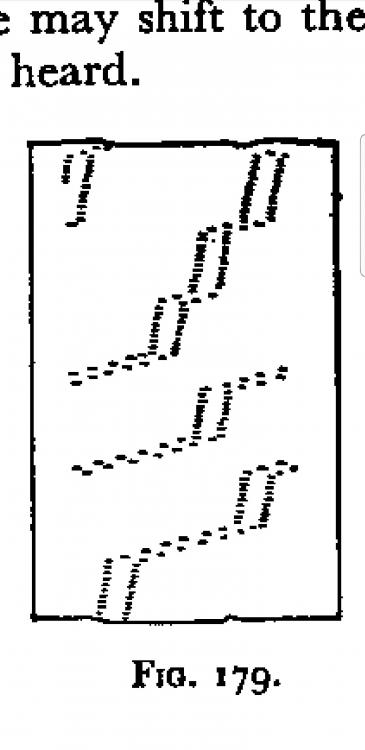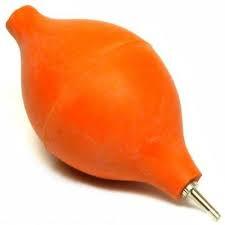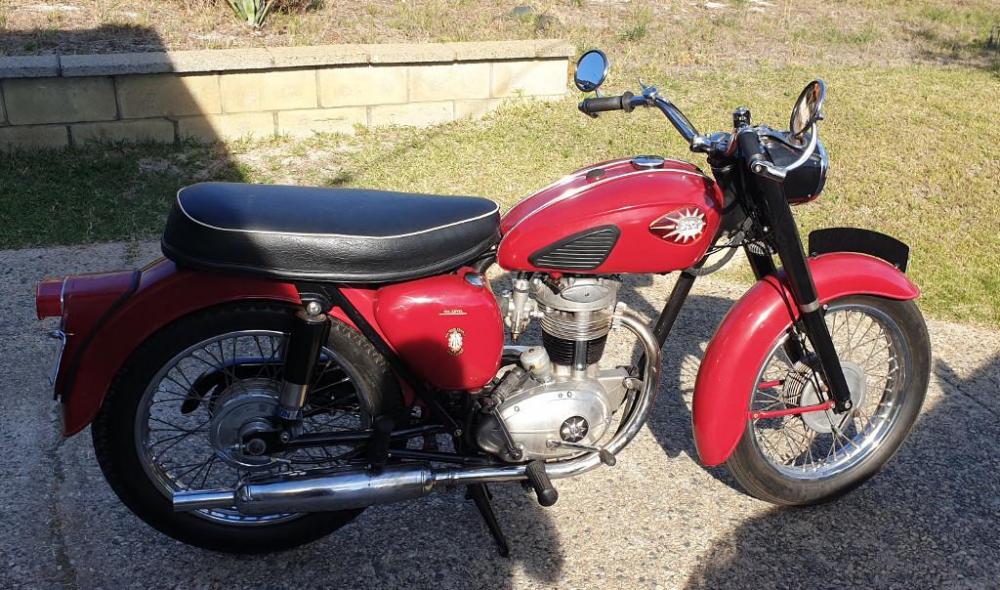Leaderboard
Popular Content
Showing content with the highest reputation on 11/03/19 in all areas
-
I thought you might be interested in this article that appeared on Hackaday https://www.empa.ch/web/s604/liga-watch2 points
-
The red hand is the chronograph minute counter, there is no minute sub dial on these watches, top right sub dial 1/10th of a second bottom middle sub dial constant seconds, top left sub dial hour counter.2 points
-
Depth of lock is something that you get a feel for when inspecting escapements. It needs to be deep enough to ensure that it is safely locked, and you can move the pallet fork across very slightly, release, and observe the “draw” to see what the action is like. On modern watches like these, I very rarely adjust thw locking. On adjustable banking pins (or at least bend-able), you always have to check it and will often find that they have been mis-adjusted. It seemed to be a common misconception that opening the banking pins was a quick fix for mis-locking. Bear in mind that if the pallet stones were moved to change the depth of lock then this also adjusts the drop. The angle of drop is wasted energy from the escapement as potential impulse is not translated into the balance while the escape wheel is disengaged from the pallets.2 points
-
8 Day French Strike on a bell. It has count wheel striking. Original half moon hands. I don't think its the original pendulum, it certainly isn't the normal type I would expect to see. If you remove the bell you should see some numbers, one of the set of numbers on the back plate should match the numbers on the pendulum. That is the way of telling if the pendulum is original, The other set of numbers tells you the length of the pendulum in French measurement, I can't remember which one. White enamel dial, I see a touch of chipping around the key hole on the time side. Fine regulating can be made by the adjustment jut above the 12.2 points
-
Hi The problem is that a small defect like that on a new watch may spread as according to our timex Guru the dial is coated with a compound which glows when a current is applied, so there must be a fault in the coating. I you are like me wake several times a night (insomniac) or old age I guess it is useful and yes it would annoy me too on a new watch.1 point
-
If you like pictures and like to hold something in your hand I found you a PDF. Normally on modern watches the escapement should be fine unless you start changing components. Unfortunately as quoted above others seeking a quick solutions to unknown problems feel obligated to play with things especially banking pins. Banking pins are a common target because they're bendable or in the case of American pocket watches they can be rotated. So this means on watches like that you always have to check that there where there supposed to be. In the PDF below page 9 Section 5 shows the purpose the banking pins for horn clearance only. http://facweb.northseattle.edu/dmcconnon/Escapement/Escapement handout.pdf1 point
-
The newest 7002 is over 20 years old and most you run into are pretty neglected. The several I’ve worked on can achieve pretty good amp, usually in the mid to high 200s but nothing much more, so I’d be inclined to rule out overbanking. Timegrapher traces would be helpful though The barrel/arbor/ms is ‘sealed’ and intended to be replaced as a unit. The barrel can be opened but the equivalent GR mainspring is a bit weaker even than the OE. The b/a/ms is no longer available but the unit intended for the 7S26b can be used and can still be found if you look Sent from my iPad using Tapatalk1 point
-
Thank you. I don,t think I have ever dealt with such a case, but then I hardly replace a mainspring and am pretty sure oils here are more of massey ferguson extract. Best1 point
-
Hi done a bit of research, the attached instructions for the ETA 251.262 are the same, should give you an insight. Chronograph eta 251.262 Tag CS,CT 1111.pdf1 point
-
Not much to say really. It's a symptom of excessive amplitude, the balance wheel swinging so wide it makes a complete revolution and the impulse jewel crashes into the opposite fork horn and bouncing back. This will cause the watch to periodically gain considerably. Use a weaker mainspring and/or heavier oil to remedy. Trace on timing machine would look something similar to this:1 point
-
This guy always gives good explanations: My own documentation is BHI material and is copyrighted, so I will not share it, but that video gives a good description. It's important to realise what happens at the different phases of the escapement motion. If it's too much to take in at once, then start with the anchor escapement and advance from there. That is how escapements are traditionally taught, starting with the simplest.1 point
-
Hi the style looks rather like a Gustav Becker but most if not all his were marked GB of derivitives of the trade mark there are several. His early ones had the disc pendulum, I had the priviledge of repairing on of those, new suspension cleaning etc a beautiful clock just to look at in motion, hypnotic.1 point
-
There is a flat section of the stem usually, which is nearer "10". From "10", there is the tip, the square, and then the notch.... the flat section should be next, before the threading starts. Grip here with a pin vice. For the pendant tube, punch it out with a punch which has a size which is just marginally under the width of the tube. Use a lightweight hammer and keep tapping. Test old crown with new pendant tube before fitting.1 point
-
Yes, the HMT 6501 is licensed Citizen 6501. It is a shame they have ceased production, as they are well made, and virtually indistinguishable from the Citizen 6501 apart from the logo and brushed finish on the rotor. The same, or very similar movement is also referred to as the HMT69061 point
-
An advertisement by Chas. Waller and Son from November 1940. churchmagazine_st_nicholas_mrc_compressed.pdf1 point
-
It reminds me of something.... https://scotchwhisky.com/magazine/opinion-debate/the-way-i-see-it/9504/why-distilleries-have-cupolas-not-pagodas/ Maybe you should keep a dram inside. In case of emergencies you understand.1 point
-
Very, very valuable information @Marc! Much appreciated! Thank you!1 point
-
Hi Without a close look at the movement it looks like a french clock of which there are a few makers Japy Feres. A.B.Mougin to name but two. really need the movement from the case.1 point
-
A little more clarity; Incabloc.pdf correct Also correct Right again OD of the hole jewel Right on both counts Here you've got me This is the little "U" shaped clip that holds the bloc into the main plate or balance cock on the balance side in thos settings that aren't a friction fit. This is indeed a screw for those settings where the bloc is secured in place with a screw instead of a Clavette pivot hole jewel, although I much prefer the stoned feline This actually reads "Pierre de Contre Pivot" "dessus" "dessous" and is the cap jewel upper and lower. This is important as often the lower cap jewels are thinner than the upper ones. As above this should read "Ressort de Contre pivot" "dessus" "dessous" and refers to the lyre springs or cap jewel springs. Contre pivot = end stone or cap jewel. Where different thicknesses of cap jewels are used top and bottom you will need different springs to accomodate their different dimensions. If anyone can fill in collumns 7 & 8 we will have the full picture, although I believe that they refer to dimensions not part numbers.1 point
-
@VWatchie Ha ha ha...... just love the stoned kitten!!! This might help make things a little clearer though.. http://www.incabloc.ch/en/systeme_incabloc.php1 point
-
Thank you, @Marc! That table which you linked to is potentially very useful but I’m having serious trouble understanding the French headlines. Perhaps those of us interested can “decode” it together? For every column with a parenthesis and a question mark I don’t feel sure at all and need your additional info! Column 1: Calibres de base = Base calibre Column 2: Grandeur = Ligne size Column 3: Calibres dérivés = Derived calibres Column 4: Ø trou = Hole diameter (I guess, but what hole?) Column 5: Bloc dessus = Upper shock block (for the balance cock? I’m just guessing) Column 6: Bloc dessous = Lower shock block (in the main plate? I’m just guessing) Column 7: Creusure plat. = Recess ??? (I have no idea!?) Column 8: Creusure cad. = Recess ??? (I have no idea!?) Column 9: Clavette = (I have no idea!?) Column 10: Vis = (Means “screw” in French but again, I have no idea?) Column 11: Chaton empierré = (Google translates this to “stoned kitten”. Jewel housing, no?) Column 12: Pirre de dessus = (Google translates this to “Stone from above”. Could it be the balance cap jewel on the balance cock side?) Column 13: c. pivot dessous = (Something a about "Pivot underneath". Could it be the balance cap jewel on the main plate side?) Column 14: Ressort de dessus = (I guess this could be the anti-shock spring for the shock block in the balance bridge?) Column 15: c. pivot dessous = (Well, if the previous is an anti-shock spring then this would be the anti-shock spring for the shock block in main plate?) A French Chaton empierré!?1 point
-
It is a "Two for one" day today, and speaking of unaligned dates, I finally got round to sorting the sticky day disk on this bright yellow HMT Rajat, so it is getting a bit of an airing along side the "Dimetron". This picture gives a slightly better impression of the shimmering blue sunburst dial of the Dimetron and the almost fluorescent yellow of the HMT. Its all so bright I think I need to wear shades.1 point
-
1 point
-
Didn't anyone make arrows as a kid. Stick and a pen knives and just sharpen the end. Sent from my GT-N5110 using Tapatalk1 point
-
It is a public holiday in Western Australia today (WA day), and today was a big day. The BSA in my avatar for the first time in about 5 years I took it for a ride today. When I purchased it, it cosmetically looks pretty good, but mechanically was not so good. I started a ground up restoration on it 5 years ago, but the project stalled a couple of years back due to me not having enough time and some of the engine work I did not feel confident to do. A few months ago my dad mentioned he was looking for a project to give him something to do so I gave him my BSA with the deal I would keep it licensed and pay for any parts needed that I hadn't already purchased and he could finish the restoration and keep the bike to ride until he was bored of it. He got it running a few days ago, so I dropped by today and took it for a ride. I have been looking forward to having that ride for the last 5 years. The bike still needs a little more tweaking before its 100% complete, now my dad is on the hunt for another vintage bike. Shame I had to sell my WM20 project bike a couple of years back. Anyhow, this is how it looks now, not hugely different from before, but mechanically much sounder. I'm sure it will give my dad another few months of fun before he gets bored of it and hands it back.1 point











